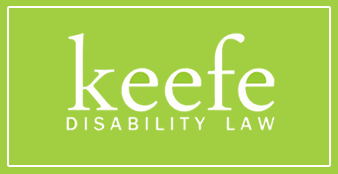
A Breakthrough Decade of Medical Discoveries in Detection and Treatment
From 2010 to 2019, the world of medicine witnessed several amazing breakthroughs. Researchers are developing new technologies and modalities for early diagnosis and more effective medical treatment. The 2010s were an admirable decade of medical advancements, particularly related to cancer, one of the leading causes of death and disability worldwide.
If your medical condition stops you from working, you may be eligible to apply for Social Security disability benefits. Speak with Patrick Hartwig and the legal specialists at Keefe Disability Law to improve your chances of approval.
Eight Medical Breakthroughs From the 2010s
1. Personalized Precision Medicine
Every person is different. While there may be some standardized treatments for some diseases, doctors are increasingly taking a more personalized approach to medicine. Precision medicine can sometimes involve genetic, genomic, or molecular testing. This allows doctors to identify specific biomarkers or genetic mutations in cancer patients.
Drugs have been developed to target specific genetic changes in patients. A notable example is imatinib, which is sold under the brand name Gleevec. It is used to treat chronic myelogenous leukemia, as well as gastrointestinal stromal tumors. It works remarkably well for certain patients with certain genetic changes. Imatinib is just one example of how precision medicine counters older “one size fits all” approaches to medicine.
2. Robotics and Assistive Technologies
One of the major medical breakthroughs from the 1980s was the development of a surgical robot. In the decades that followed, engineers and researchers have continued with advancements in medical robotics technology. Beyond the surgical theater, robotics are playing an increasingly powerful role as mobility aids.
Developed by Ekso Bionics in California, the Ekso GT is a robotic exoskeleton. Patients with disabilities in their lower extremities are able to take assisted steps and improve mobility, even if they had previously been told they would never walk again. It has been effective in helping people with spinal cord injuries, traumatic brain injuries, and multiple sclerosis.
Another example is ReWalk, a similar assistive exoskeleton marketed by ReWalk Robotics, previously known as Argo Medical Technologies. Patients use a wrist-mounted remote to help them stand upright, walk, and climb stairs. The FDA approved ReWalk in 2011.
3. Gene Editing to Treat Sickle Cell Anemia
Building on insight from the Human Genome Project, a medical research project that started in the 1990s, modern gene editing is making significant progress in treating a range of genetic disorders. A notable example of this is clustered regularly interspaced short palindromic repeats, or CRISPR for short.
Feng Zhang from the Broad Institute of MIT and Harvard published a paper on CRISPR-Cas9 for genome editing in January 2013. With CRISPR, researchers are attempting to edit genes associated with conditions like sickle cell anemia. By targeting specific genetic codes and editing DNA, CRISPR systems can provide bacteria with adaptive immunity against viruses. Further development may lead to therapeutic applications.
4. Breakthroughs in Immunotherapy
Sold under the brand name Keytrude, pembrolizumab represents a significant breakthrough in immunotherapy for treating certain types of cancer. First approved in 2014, pembrolizumab stimulates the body’s own immune system to fight cancer cells. It does this by selectively blocking the PD-1 protein on the surface of T-cells, a type of white blood cell. The T-cells are then stimulated to find and kill cancer cells.
A similar immunotherapy cancer treatment drug is nivolumab, marketed as Opdivo. As an immune checkpoint inhibitor, it is a monoclonal antibody that binds to PD-1 proteins. This stops cancer cells from suppressing the body’s natural immune system, freeing it to attack cancer cells.
5. Detecting Lung Cancer Using Artificial Intelligence
Machine learning and artificial intelligence have frequently made the news, but they are hardly new. Companies, including Google, have been actively working on specific AI applications for years. In 2019, Google launched an AI system for detecting lung cancer.
Typically, human radiologists must review hundreds of 2D images from a single CT scan to look for cancer cells. They can be small and hard to spot. By contrast, the Google system uses an algorithm to review a 3D volumetric model, successfully identifying malignant tissue and suspicious nodules in the lungs that human eyes may have overlooked. Early detection is one of the best predictors of beating cancer.
Along with detecting lung cancer, Google has also worked on other AI models with medical applications. It uses a similar kind of natural language processing as the one that powers Google Assistant. With it, the Google AI tool can review electronic medical records (EMR), like test results, treatment plans, and diagnoses. Machine learning allows the system to make clinical predictions, like a patient’s prognosis, and offer suggestions for personalized treatment plans.
6. Transcatheter Aortic Valve Replacement (TAVR) Device
Invasive surgery always carries risks, but sometimes it is necessary. This can often be the case with heart conditions that may qualify for Social Security disability benefits. Heart disease is the leading cause of death and disability in the United States. Medical advances now allow for a less invasive option for certain procedures.
The FDA approved the first transcatheter aortic valve replacement (TAVR) device in November 2011. Developed by Edwards Lifesciences, the SAPIEN artificial valve replaces defective or diseased valves in patients with aortic stenosis, narrowing of the aorta valve’s opening. It eliminates the need for open-heart surgery, as TAVR can be inserted using a catheter instead. The far less invasive procedure continues to gain supporters among the medical community.
7. Internet of Medical Things (IoMT)
Just as consumer-facing AI technologies can lead to medical applications, the same is increasingly true with the Internet of Things (IoT). This has led to the growing expansion of the Internet of Medical Things (IoMT). Internet-connected medical devices provide health care professionals with real-time data about their patients.
In a hospital setting, health care providers can use IoMT sensors to track the quality and supply of medical assets. IoMT can directly impact patient care, too. Hospitals use infusion pumps to deliver fluids to a patient in controlled amounts. If it is connected to sensors that monitor a patient’s vital signs and other analytics, it can automatically adjust the dosage accordingly.
Also called IoT in health care, IoMT extends to in-home care too. Wireless devices can facilitate remote patient monitoring (RPM), collecting and sending data about heart rate, blood pressure, oxygen saturation, and other vitals. If levels fall beyond the expected range, the device can send an emergency alert to caregivers. This can help reduce the need for readmission into hospitals and clinics.
8. Artificial Pancreas for Diabetic Patients
An autoimmune disease affecting insulin levels in the body, diabetes is more than high blood sugar. It can have a profound impact on a person’s quality of life. They may experience frequent urination, unexpected weight loss, and extreme fatigue. Diabetes can affect someone’s vision and cause them to be more prone to infection.
Managing diabetes can be confusing, challenging, and overwhelming. Helping people with type 1 diabetes, the MiniMed 670G from Medtronic is a self-adjusting insulin pump. It monitors blood sugar levels and supplies the appropriate amount of insulin automatically. It became the first-ever hybrid closed-loop system approved by the FDA in September 2016.
As one of many invisible disabilities eligible for disability benefits, diabetes affects millions of Americans. Other companies joining Medtronic in developing the world’s first artificial pancreas are Tandem Diabetes, Insulet, Beta Bionics, and Bigfoot Medical.
Apply for SSDI Benefits With Qualified Legal Guidance
Seeing these amazing medical advancements may offer little solace to people suffering from impairments, injuries, and conditions. Medical breakthroughs still take time before they can help the average person. In the meantime, getting the coverage and support you need to cover costs like medical bills and lost wages is crucial.
If your disabling condition prevents substantial gainful activity (SGA), you may qualify for Social Security Disability Insurance (SSDI). Before applying for SSDI, speak with the experienced team at Keefe Disability Law. There are many benefits of hiring a Social Security attorney. Your attorney can help ensure your application is accurate and complete.

